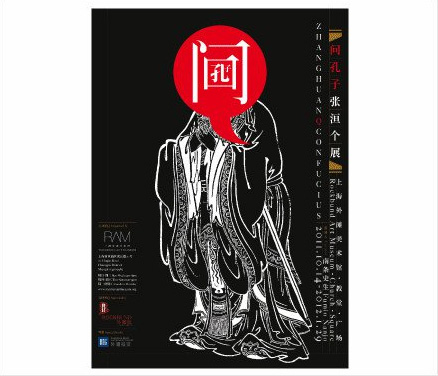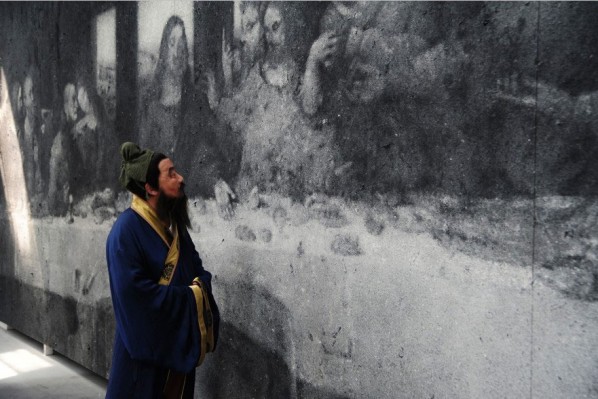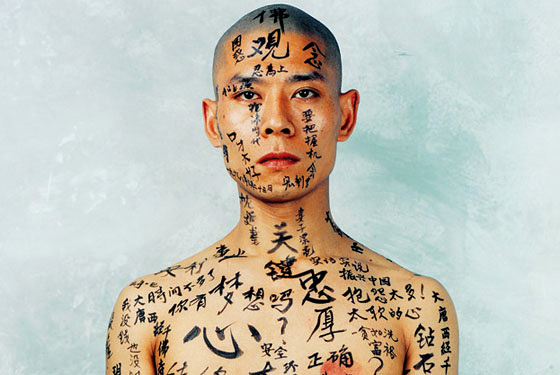 The Rockbund Art Museum (RAM) will present a fresh look to visitors on October 15, 2011, after completing Phase II of the historical building’s renovations for presenting contemporary art in half a year, with Q Confucius - the largest solo exhibition in China by world-renowned artist Zhang Huan. With Confucius—the traditional saint in Chinese culture as his inspiration, the now Shanghai-based artist explores the impact on art, society, and religion of China’s rapid economic, cultural, and environmental changes in this exhibition. All new work has been tailored specifically for RAM’s exhibition featuring animated large-scale sculptures, paintings, ash paintings and installations. Guest curated by Fumio Nanjo, Director of Mori Art Museum, Tokyo, Zhang Huan: Q Confucius will be on view from October 15, 2011 – January 29, 2012, accompanied by a catalog and a series of talks and panel discussions.
The Rockbund Art Museum (RAM) will present a fresh look to visitors on October 15, 2011, after completing Phase II of the historical building’s renovations for presenting contemporary art in half a year, with Q Confucius - the largest solo exhibition in China by world-renowned artist Zhang Huan. With Confucius—the traditional saint in Chinese culture as his inspiration, the now Shanghai-based artist explores the impact on art, society, and religion of China’s rapid economic, cultural, and environmental changes in this exhibition. All new work has been tailored specifically for RAM’s exhibition featuring animated large-scale sculptures, paintings, ash paintings and installations. Guest curated by Fumio Nanjo, Director of Mori Art Museum, Tokyo, Zhang Huan: Q Confucius will be on view from October 15, 2011 – January 29, 2012, accompanied by a catalog and a series of talks and panel discussions.

An actor portraying Confucius alongside The Last Supper of Mankind, a work in incense ash. Both are part of the Zhang Huan exhibition of Q Confucius.
Q Confucius originates from a series of questions Zhang Huan posed about the future: Faced with rapid economic and societal changes and energy, climate, and environmental challenges, how can human beings achieve sustainable and harmonious development and restrain from rapacious plunder? What responsibilities come with China’s rise in international prominence and power; and how do we build a new international order in politics, economics and culture? Where is the sense of spiritual belonging for contemporary Chinese – should there be a return to tradition, a closer alignment to the west, or something new? Though these questions seem immense and unrelated which are actually inherently connected by inescapable bonds, Zhang Huan hopes to explore their inner structure through large sculptures, paintings, ash paintings and installation works. Taking Confucius as a cultural symbol throughout the exhibition, the artist provides a context for the questioning of spirituality in contemporary China while contrasting the Chinese spiritual leader’s beliefs with the religious doctrine of Jesus and other religions. These will include “Questioning Confucius No. 6,” an installation under a giant wire netting that incorporates living trees, a few dozen monkeys, and a robot on a stainless steel bed.
 Zhang Huan
Zhang Huan
Zhang Huan
Zhang Huan is an internationally renowned contemporary artist. He was born in Anyang, Henan Province in 1965, and currently lives and works in Shanghai and New York. He was active in Beijing in the 1990’s, where he was considered one of the foremost avant-garde artists in the nation. During that period, he was mainly doing performance art, and his representative works are 12 square meters, To add one meter to anonymous mountain, To raise the water level in a fish pond and etc. In 1998, He moved to New York and became a full time artist who took various medium to express his art. He had made a lot of performances home and abroad. His representative works include My New York, Family Tree, Peace and etc. In recent years, the artist has moved away from performance and worked on Buddhist sculptures, bringing new ideas and styles to traditional Buddhist statues, while also working with incense ash, which he collects from temples and molds into paintings and sculptures.

Fumio Nanjo
Fumio Nanjo (b.1949 in Tokyo) is the director of Mori Art Museum since November in 2006 as well as a lecturer of Keio University since 1991. He graduated from Keio University in the faculty of Economics (1972) and Letters (Aesthetics/Art History; 1977). He organized numerous exhibitions as an officer of the Japan Foundation (1978-1986), as the director of ICA Nagoya (1986-1990), as the founder and as the representative director of Nanjo and Associates (1990-2002), and as the deputy director of Mori Art Museum (2002-Oct.2006). His main achievements include commissioner of the Japan Pavilion at the Venice Biennale(1997), commissioner at the Taipei Biennale(1998), member of jury committee of the Turner Prize(1998), co-curator of the 3rd Asia-Pacific Triennial of Contemporary Art(Brisbane,1999), member of the selection committee of the Sydney Biennale(2000), art specialist of the Japan Pavilion of the Hanover Exposition(2000), artistic co-director of the Yokohama Triennale 2001, Tokyo-section co-curator of the Sao Paulo Biennale (2002), selector of the Artes Mundi Prize in Wales(2004), jury member of the Golden Lion Prize of the Venice Biennale(2005) and artistic director of the Singapore Biennale(2006 & 2008).




























